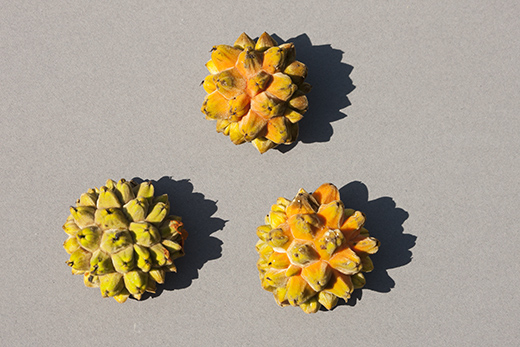What is HP latex ink?
Because incredients of HP latex ink are a well-kept secret, there is lots of speculation. Some people call it a “synthetic latex polymer”. Helpful articles on resin and latex inks are by Dr Ray Work, in Sign & Digital Graphics Magazine.
You can also visit the booth of Sam-Ink (at most major expos) and ask what is in latex ink (we give basics in our FLAAR Report on his after-market latex ink). Here is a summary:
"Latex" is a general descriptive term for an aqueous (water) dispersed polymer.
The polymer exists as spherical particles and are dispersed in water.
The polymer is a synthetic (manufactured) material.
The polymer is not natural rubber from the latex producing rubber trees.
The word latex was most likely selected as a name for the ink in order to deliberately avoid using the word resin.
If the word resin was used then it would be too easy for everyone to have figured out what was really the chemical ingredients. “Latex” was a great smoke-and-mirrors ploy.
The polymer cures (coalesces) into a film under extreme heat.
Polymers are molecular compounds, either natural or synthetically manufactured, that are made up of many repeating units of monomers.
There are several companies making latex ink; we have been in their R&D labs in different parts of the world.
 |
Photography of Castilla elastica rubber flower |
How many trees can produce latex?
So many trees produce latex it would take an entire web site to show them. The best known (in Guatemala) are frangipani (Plumeria rubra) and Stemmadenia donnell-smithii. We raise frangipani in our garden. This is the lei flower of Hawaii, but it is native to Guatemala (and introduced a century ago to Hawaii). I see frangipani whenever I visit Singapore or southern China or Viet Nam (we inspect print shops all over the world, or ink factories or attend trade shows).
If you are curious about the remarkable plants of Guatemala in general and the plants of the Maya civilization in particular, take a look at our www.maya-ethnobotany.org.
A photograph of a branch of Castilla elastica |
Did you know that the common dandelion produces a usable rubber-producing latex!
It’s amazing how many plants produce latex, and of these, some can even produce rubber! Just that to produce tons, a dandelion is perhaps not very efficient. Wikipedia is very informative.
FLAAR scientists are also working on studying resins
Some ink chemists speak about HP latex ink being another kind of resin ink. Sepiax is often called a “resin ink.” And there are several other resin inks under development in R&D labs around the world (we have been in several of these labs, but are under NDA as to the name of the company and the ingredients of the inks).
But our research on resin is different, we study natural resins of trees (of Guatemala). Our overall plant research progress is shown on our maya-ethnobotany website. The present page is an introduction to latex. We will have an introductory page to resins when time and funding allow.
Most people we speak with said they were not aware of all the trees which produce latex-like sap, so we hope our introductory page shows you what happens if you have an interest in a topic, and you make the effort to learn more about this topic by your own research.
A bunch of Castilla elastica rubber flowers |
First posted mid-May 2014.
As part of our long range project to better understand latex and resin inks, and to what degree they are the future of wide-format inkjet printing.